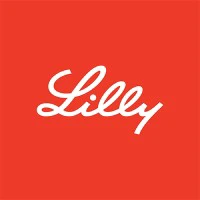Eli Lilly Shows Mixed Signals: Bearish Near-Term Outlook Amid Strong Long-Term Growth Potential
Summary
On May 05, 2025, Eli Lilly's stock exhibited slight declines amidst reduced trading volume and bearish technical indicators, as investors processed a lowered profit outlook and anticipated potential volatility in the coming days.
 Technical Analysis
Technical Analysis
Eli Lilly (LLY) closed at $821.46 on May 05, 2025, down 0.26% from the previous session. The intraday range was $813.49 to $829.51, with a trading volume below average at approximately 3.80 million against a 4.40 million typical volume, indicating reduced market participation. The stock remains below both the 50-day ($831.20) and 200-day ($842.83) moving averages, suggesting a near-term bearish bias. The RSI of 59 indicates mild bullish momentum but no overbought condition. The MACD remains positive at 10.86, signaling underlying medium-term strength despite recent weakness. Support is established near $794, while resistance is firm at $840. Short-term price action faces pressure from recent downdrafts linked to profit outlook revisions and sector peers' sell-offs.
For the next trading day (May 06), the stock may see modest downside or consolidation within the $813–$830 range as investors digest the lowered profit outlook and regulatory uncertainties. Over the coming week, barring significant news catalysts, LLY could consolidate in a range between $800 and $840, with potential volatility around the $794 support level if negative sentiment persists.
Fundamental Analysis
Eli Lilly’s market capitalization of $733.74 billion underscores its stature as a large-cap pharmaceutical leader. With an EPS (TTM) of $12.27 and a high P/E ratio of 63.08, the stock is trading at a premium valuation, reflecting strong growth expectations priced in by the market. The annual trading range ($677.09–$972.53) indicates significant volatility possibly driven by innovation pipelines and regulatory developments.
Recent developments include issuance of a lower full-year profit outlook linked partly to an upfront acquisition payment for Scorpion Therapeutics’ STX-478 breast cancer program, adding near-term earnings pressure but potential long-term pipeline value. Competition intensifies in the GLP-1 weight-loss drug space, with Novo Nordisk and Hims & Hers gaining investor attention; however, Eli Lilly’s improved trial results and stockpiling strategy for upcoming oral weight-loss treatments signal strong future revenue streams.
The discounted cash flow (DCF) valuation is approximately $348.49 per share, far below the current market price, suggesting the stock is trading with a significant premium relative to intrinsic cash flow-based valuation. This disparity is likely driven by growth expectations from pipeline drugs, brand strength, and potential market expansion rather than current cash flow generation alone.
On the longer horizon, Eli Lilly’s robust drug portfolio, ongoing clinical advancements, and defensive healthcare sector positioning support sustained growth potential. The integration of innovative treatments for obesity, diabetes, and cancer enhances the company’s competitive moat. However, regulatory risks, pricing pressures, and ongoing federal scrutiny (as indicated by recent investigations) temper the risk profile.
Price Performance Outlook
Next trading day: Expect slight weakness or sideways movement amid profit guidance concerns and sector-related selling, likely within $813–$830.
Next week: Potential rangebound consolidation with testing of support near $794; breakout above $840 would be required for a bullish technical turnaround.
Intrinsic Value and Long-Term Investment Potential
The significant gap between market price and DCF-derived intrinsic value points to a high-growth premium priced into the stock. This implies investor confidence in Eli Lilly’s product pipeline and market execution over the long term. While near-term earnings risk exists due to acquisition costs and industry pricing pressure, the company’s diversified portfolio and innovation pipeline are sources of sustained intrinsic value growth. Long-term investors should monitor clinical trial milestones, FDA approvals, and regulatory developments to reassess valuation alignment.
Overall Evaluation
LLY exhibits characteristics of a Hold candidate. The premium valuation and recent profit outlook revision suggest caution near term. Technical indicators imply mild weakness and consolidation risk below key moving averages. Nevertheless, Eli Lilly’s strong fundamentals, diversified pipeline, and sector leadership underpin long-term growth potential, warranting retention for investors with a medium to long-term horizon. Moving to a Buy or Sell categorization requires clearer signals from upcoming earnings, pipeline progress, and regulatory outcomes.



 Sign In
Sign In